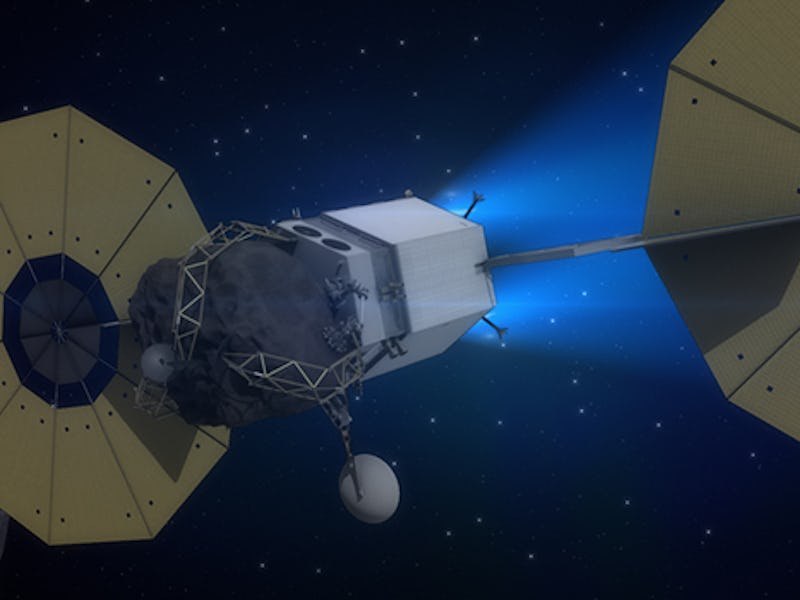Going Space Mining? Don't Forget Your Gamma-Ray Detector
A new device could make it way easier to find precious resources floating around in space.

The bill for the 2015 SPACE Act — which would give private companies the rights to any kinds of resources they find out in space — has been presented to President Barack Obama. To find valuable resources like water and precious metals, we’ll need technology that can pinpoint where they are.
So a team of scientists from Vanderbilt and Fisk universities worked with NASA engineers to create something called a gamma-ray spectroscope. As badass as it sounds, the device basically sniffs out the presence of rare elements like gold and platinum that are sitting under the surface of objects like near-Earth asteroids and moons.
A spectroscope is any instrument that can analyze the composition of a particular sample through wavelengths being emitted by those elements. All objects in space are constantly hit by cosmic radiation, which can strike surfaces at insanely high speeds and create a chain of events that basically result in gamma rays — a powerful form of electromagnetic radiation. Gamma-ray spectroscopy basically analyzes those gamma rays coming off the surface of a space object to determine the presence and concentration of a litany of elements from the periodic table — from gases like oxygen and nitrogen, to metals like silicon and iron.
The CubeSat prototype for the gamma-ray spectroscope
The new proposed system looks to measure those sub-surface elements with inexpensive sensors that are easy to build and use less power. The key is a newly discovered material: europium-doped strontium iodide, which doesn’t require the cryogenic cooling needed for previous gamma-ray spectroscopes. A cubesat prototype can be built from off-the-shelf materials and use just three watts of power to work efficiently. At just 200 pounds and 10 cubic feet of space, it’s compact enough that it might even work on large robotic landers and rovers that are dispatched to other worlds.
In a press release, Vanderbilt astronomer and study co-author Kevin Stassun called his device “good news for commercial ventures where cost, power, and launch weight are all at a premium.”
Although precious metals like gold could turn space mining into a trillion-dollar market, the real treasure these companies should be on the lookout for is water — not just because humans need it in order to live on other planets, but also for its potential use as a propellant for spacecraft, making interstellar travel far easier.